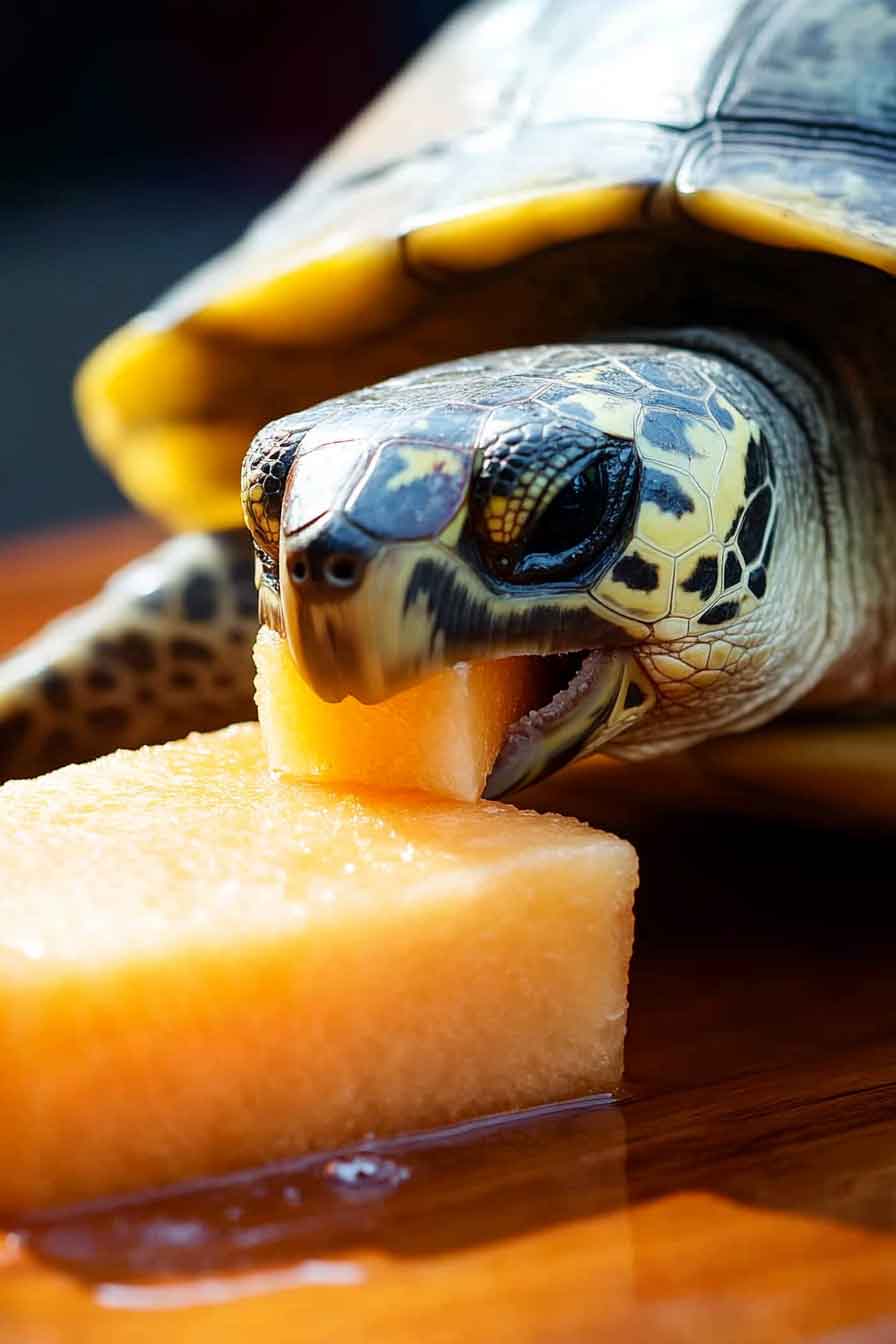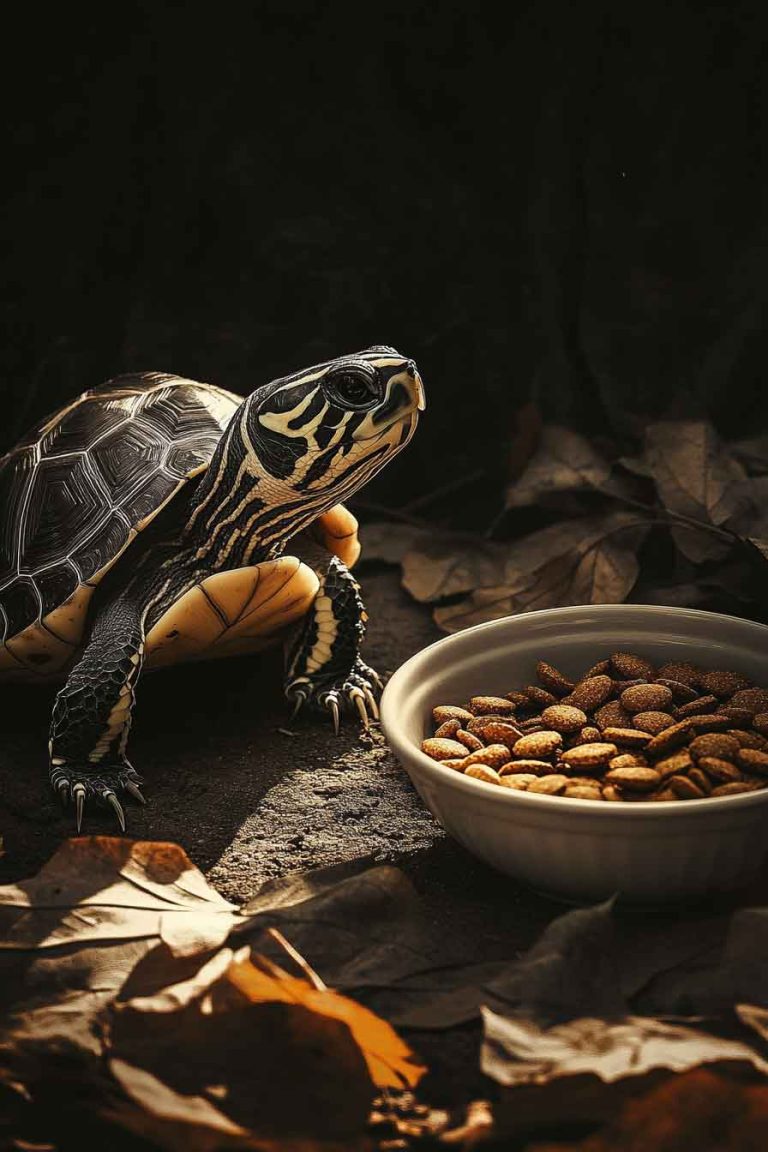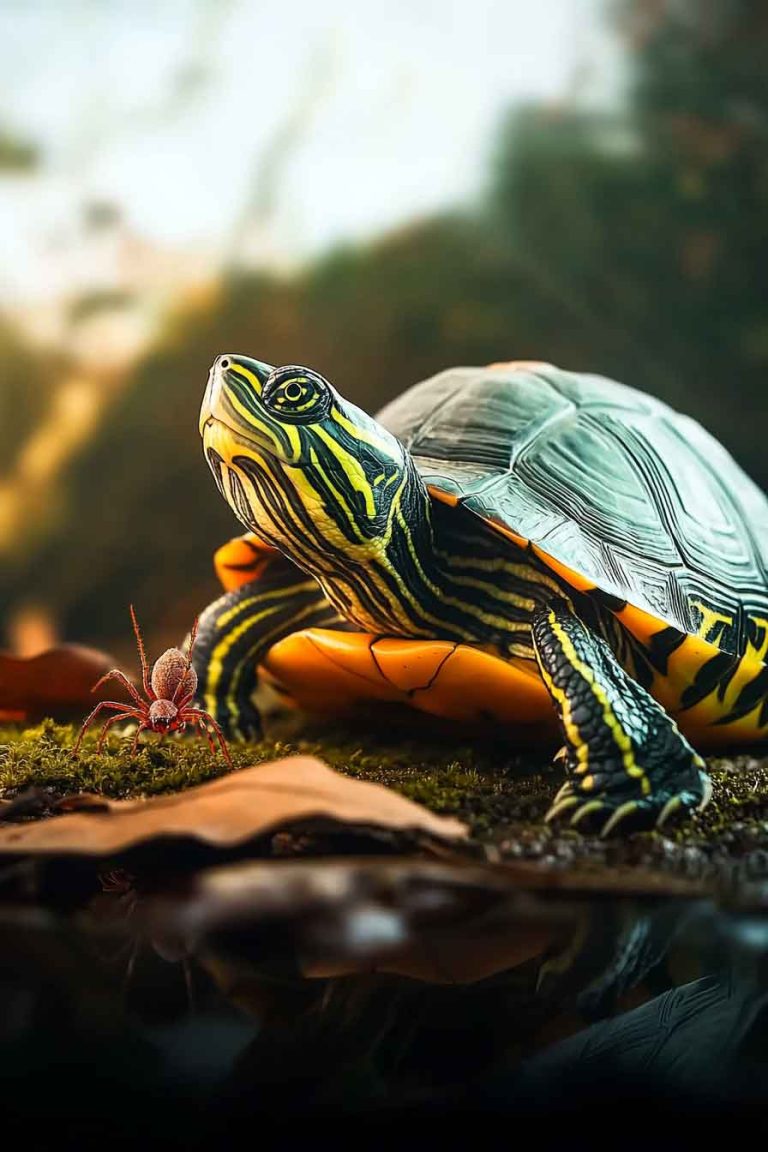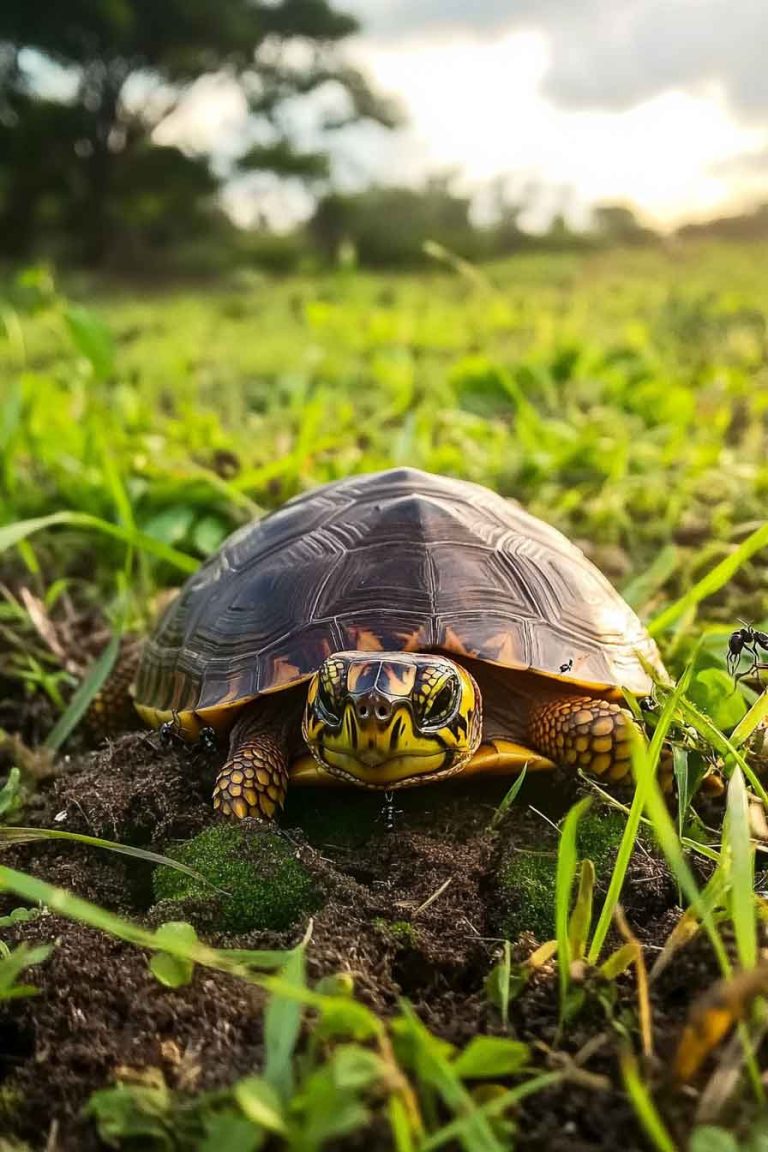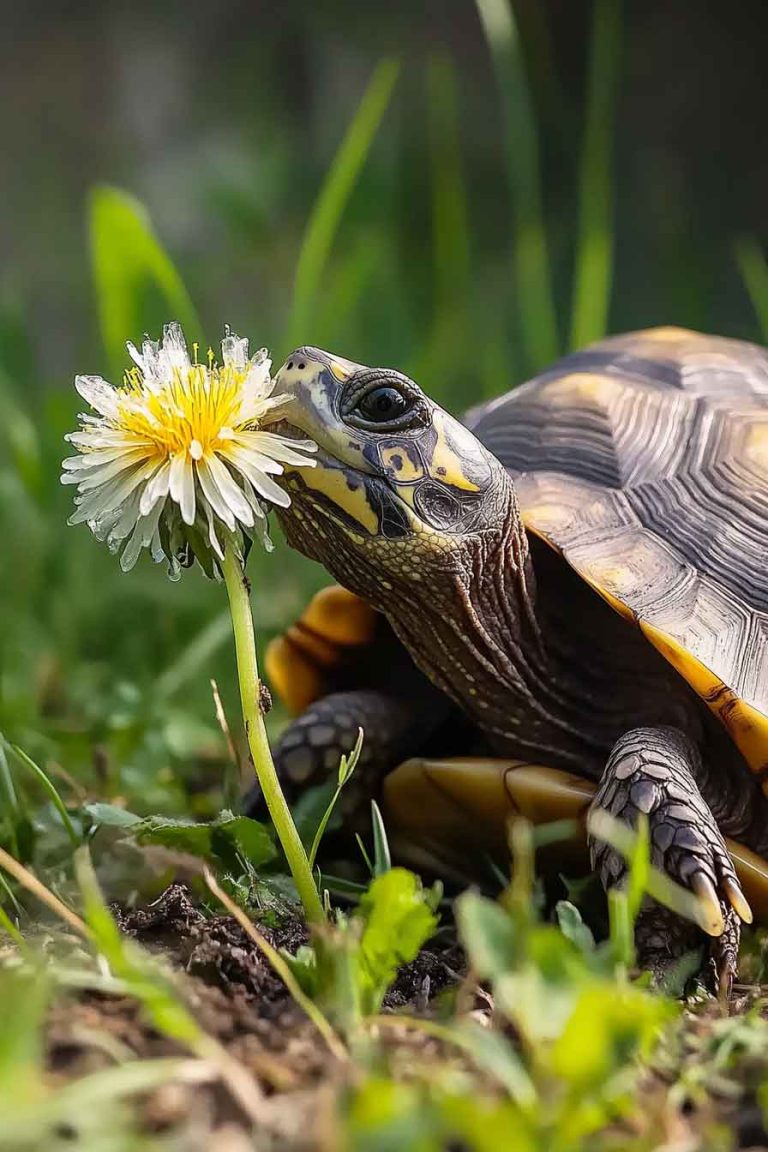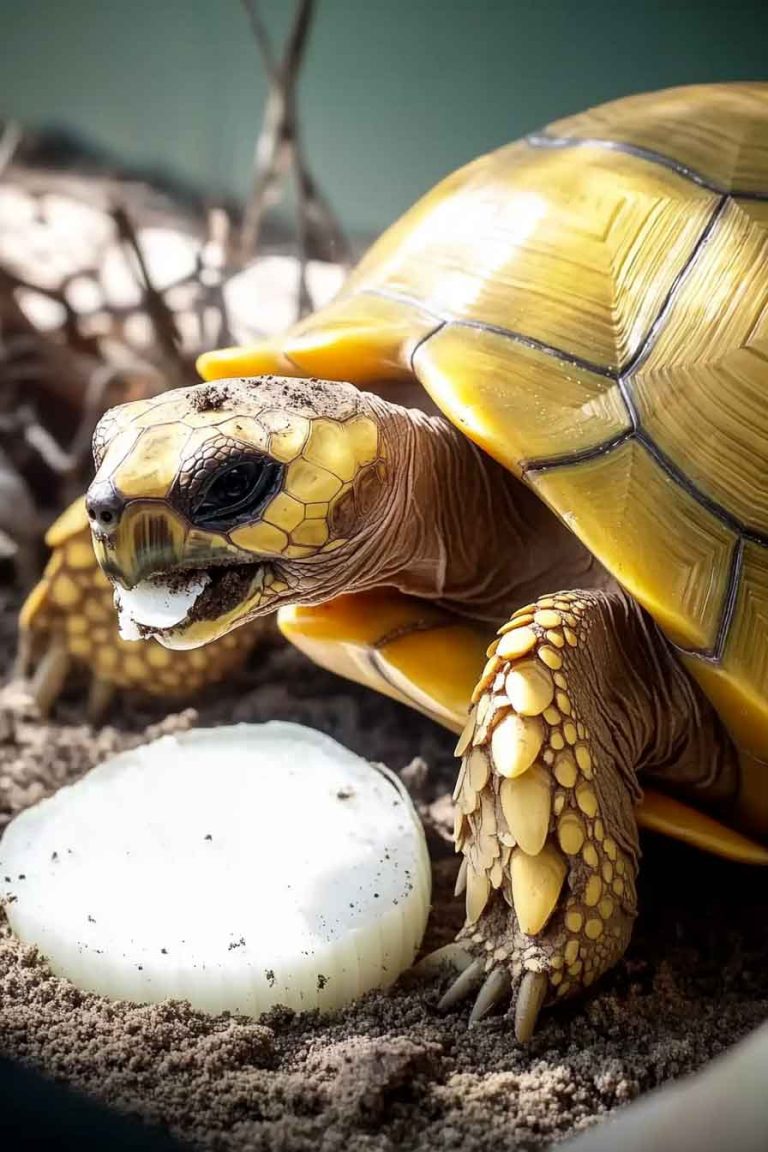Can Turtles Eat Cantaloupe? (Safe Amounts & Best Age to Feed Them)
Hey there, fellow turtle lover. So, I was munching on some cantaloupe the other day, and my little turtle buddy gave me that look—you know, the “Can I have some too?” look. And that got me thinking, Can turtles even eat cantaloupe? And if they can, when is it safe for them to start? Let’s…
Hey there, fellow turtle lover. So, I was munching on some cantaloupe the other day, and my little turtle buddy gave me that look—you know, the “Can I have some too?” look. And that got me thinking, Can turtles even eat cantaloupe? And if they can, when is it safe for them to start?
Let’s dive into it together and talk about everything I learned. We’ll cover whether cantaloupe is okay for turtles, if baby turtles can have it, and what things we should watch out for.
Can Turtles Eat Cantaloupe? Yep—they can! Turtles can eat cantaloupe, and most of them totally love it. It’s juicy, sweet, and soft—basically a fruity treat for your shelled friend. But, and this is a big one, just because they can eat it doesn’t mean they should eat a lot of it.
I mean, cantaloupe is full of sugar. It’s not toxic or dangerous like onions or garlic, but turtles have delicate tummies. So we have to be careful. Think of cantaloupe like candy—fun to snack on now and then, but not something they should eat every day.

Is Cantaloupe Healthy for Turtles?
Alright, here’s the scoop. Cantaloupe has good stuff like:
- Vitamin A – helps your turtle’s eyes and skin.
- Vitamin C – supports the immune system.
- Water – keeps them hydrated, especially in the summer.
But it also has natural sugar. A lot of it. And turtles aren’t built to handle too much sugar. That’s why it’s better as an occasional treat, not a meal.
When I first gave my turtle a small cube of cantaloupe, he went nuts for it. But I only offer it once in a while, just a tiny piece, because I want him to stay healthy. It’s all about balance.
Nutrition Facts of Cantaloupe (Per 100g)
Let’s take a quick look at what’s inside cantaloupe:
- Water: 89.82 g
- Sugar: 7.86 g
- Carbohydrates: 8.16 g
- Protein: 0.84 g
- Fiber: 0.9 g
- Calcium: 9 mg
- Phosphorus: 15 mg
- Vitamin C: 36.7 mg
- Vitamin A (Beta-carotene): 169 mcg
Now here’s what that means for turtles. The calcium to phosphorus ratio is not perfect. It’s kind of off. Turtles need more calcium than phosphorus to keep their shells strong. So we don’t want cantaloupe to mess with that balance.
It also has sugar—again, not toxic, but too much can cause diarrhea or upset their stomach. So, just a nibble is fine, but we shouldn’t go overboard.
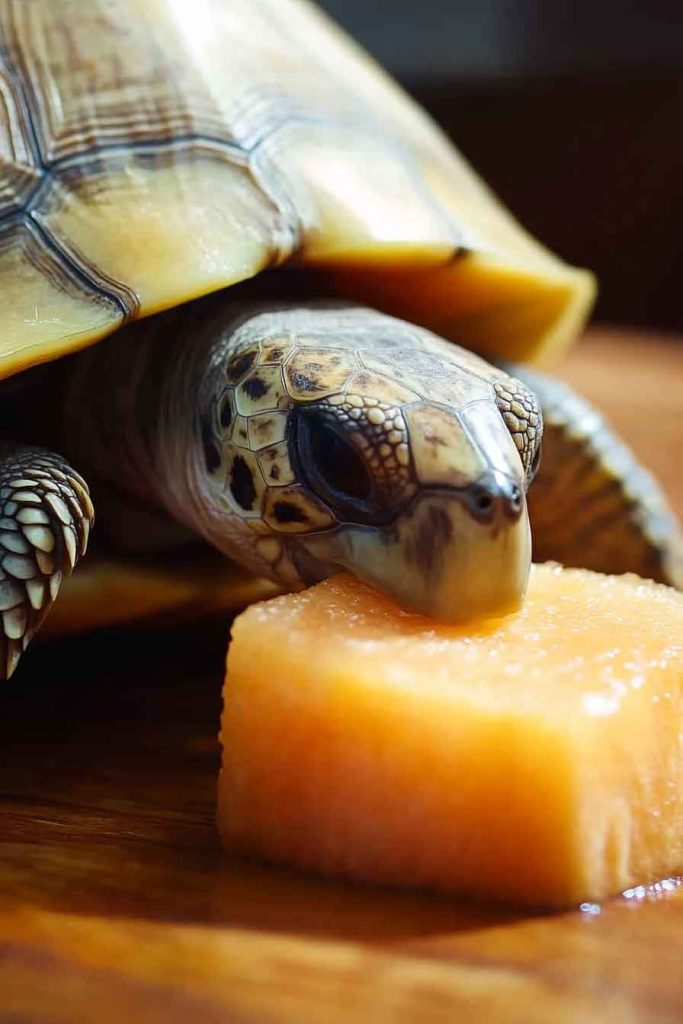
Do Turtles Even Like Cantaloupe?
Oh yeah—they do. At least, mine does. And I’ve seen tons of other turtle parents say the same. Turtles have this funny way of rushing toward anything colorful, and cantaloupe is bright orange and smells sweet. It grabs their attention right away.
But just because they love it doesn’t mean we give it freely. I like to treat it like dessert. You get your leafy greens first, then maybe a cube of cantaloupe after. Works every time.
At What Age Can Turtles Eat Cantaloupe?
So here’s something important—age matters. Baby turtles have super sensitive stomachs. Their digestive system isn’t fully ready for sugary fruits like cantaloupe. I waited until my turtle was at least 6 months old before even trying a tiny bite.
For babies under 6 months, I stick to leafy greens, a few veggies, and turtle pellets. Once they get a little older and their tummy can handle more, I start with teeny-tiny pieces of fruit, like cantaloupe.
If you’ve got a baby turtle and you’re tempted to give them a bite, just hold off a bit. It’s worth waiting to make sure they stay safe and healthy.
How Much Cantaloupe Is Okay?
Here’s my personal rule: no more than one small piece the size of a pea once a week. That’s it. It’s tempting to give more when they beg with those little eyes, but trust me, too much sugar is not good for them.

Too much cantaloupe can lead to:
- Upset stomach
- Loose stool
- Sugar-related health problems
- Imbalance in calcium/phosphorus ratio
I also make sure to remove the seeds and rind. The rind is way too tough, and the seeds can be a choking hazard or hard to digest. Always peel the fruit, cut it into tiny pieces, and offer just a bit.
Health Risks of Feeding Too Much Cantaloupe
Let’s go over the risks. I’ve seen people give their turtles a whole chunk of fruit, thinking “It’s natural, right?” But that’s not how it works with turtles.
Here are the problems that can pop up:
Digestive Issues
Turtles aren’t used to sugar-heavy diets. Too much cantaloupe can cause diarrhea and even dehydration if they keep losing water. A healthy turtle should have a balanced gut—and fruit overload can mess with that.
Calcium Deficiency
This one’s huge. Turtles need a 2:1 calcium to phosphorus ratio in their diet. But cantaloupe’s ratio is off—it has more phosphorus than calcium. That can pull calcium away from their bones and shell, leading to problems like Metabolic Bone Disease.
Long-Term Sugar Problems
While sugar from fruit is natural, it can still hurt in large amounts. Over time, too much fruit can weaken a turtle’s immune system and make them more likely to get sick. It’s not instant, but it adds up.
So I always treat cantaloupe like a rare snack, not a daily food. Think of it like a little candy treat for your turtle buddy.
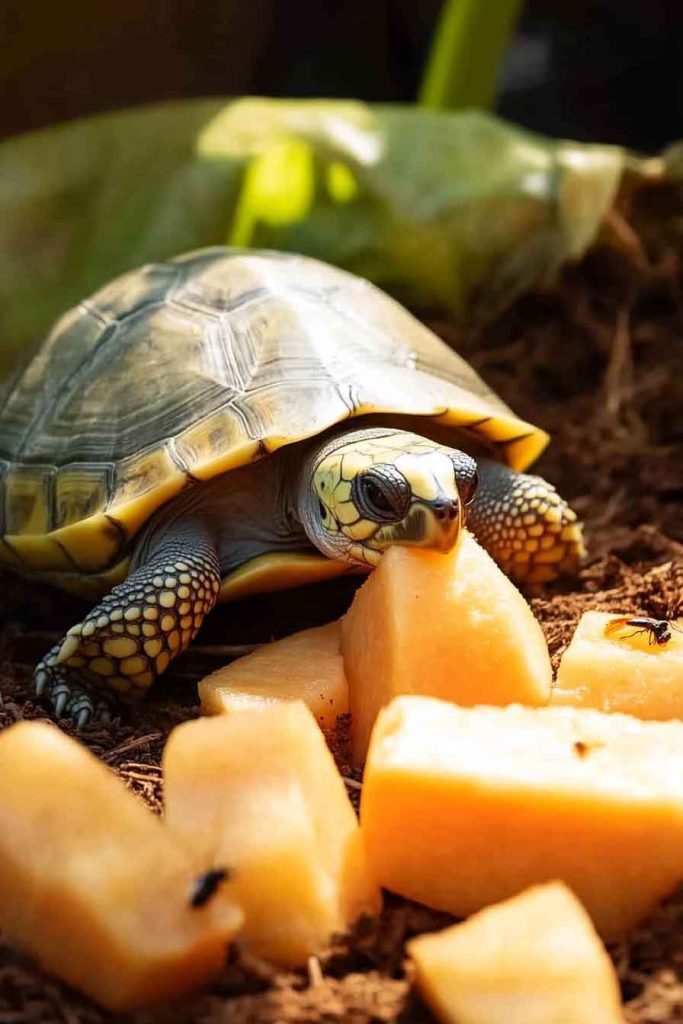
Can Baby Turtles Eat Cantaloupe?
Nope, not yet. I don’t give cantaloupe to baby turtles. Their digestive systems are still growing, and even a little sugar can mess things up. I waited until my turtle was about 6 months old before even testing a nibble.
If you’ve got a hatchling or a really young turtle, stick to safe basics like soft greens, boiled veggies, and calcium-rich pellets. Let them grow strong first. Fruit treats can come later—when their tummies are ready.
Frequently Asked Questions (FAQs)
Can Box Turtles Eat Cantaloupe?
Yes, box turtles can eat cantaloupe in moderation. They’re omnivores, so they can handle small fruit pieces better than some aquatic turtles. But I still stick to the once-a-week rule to keep sugar in check.
Can Red-Eared Sliders Eat Cantaloupe?
Yes, they can. But I give it to them very sparingly. Red-eared sliders love fruit, but their digestive systems can get overwhelmed by sugar. A tiny cube now and then is more than enough.
Can Painted Turtles Eat Cantaloupe?
Yep, they can! But same deal here—tiny amounts, not often. Painted turtles are more into leafy greens and aquatic plants, so fruit is more of a treat than a meal.
Can I Give My Turtle Cantaloupe Seeds?
No way. I always scoop out the seeds first. They’re a choking risk, and turtles can’t digest them well. The rind is also too tough and should be thrown away.
What Other Fruits Can Turtles Eat Safely?
If you’re curious about other fruits that are safe in moderation, here are a few I rotate with my turtle:
- Blueberries
- Strawberries
- Watermelon (seedless)
- Apple (peeled, no seeds)
- Banana (tiny slice)
Just remember: fruit = treat, not main dish.
Conclusion
So, can turtles eat cantaloupe? Yes, but only a little. It’s a tasty, juicy treat they’ll love—but too much can hurt their health. I keep it as a once-in-a-while snack, and I always wait until my turtle is old enough before offering any.
Be a smart turtle parent. Stick to safe amounts, avoid seeds and rind, and watch for signs of upset tummy. Cantaloupe is fun, but your turtle’s health comes first.
Hope this helped you and your little shelled buddy. Stay safe, and happy feeding!

